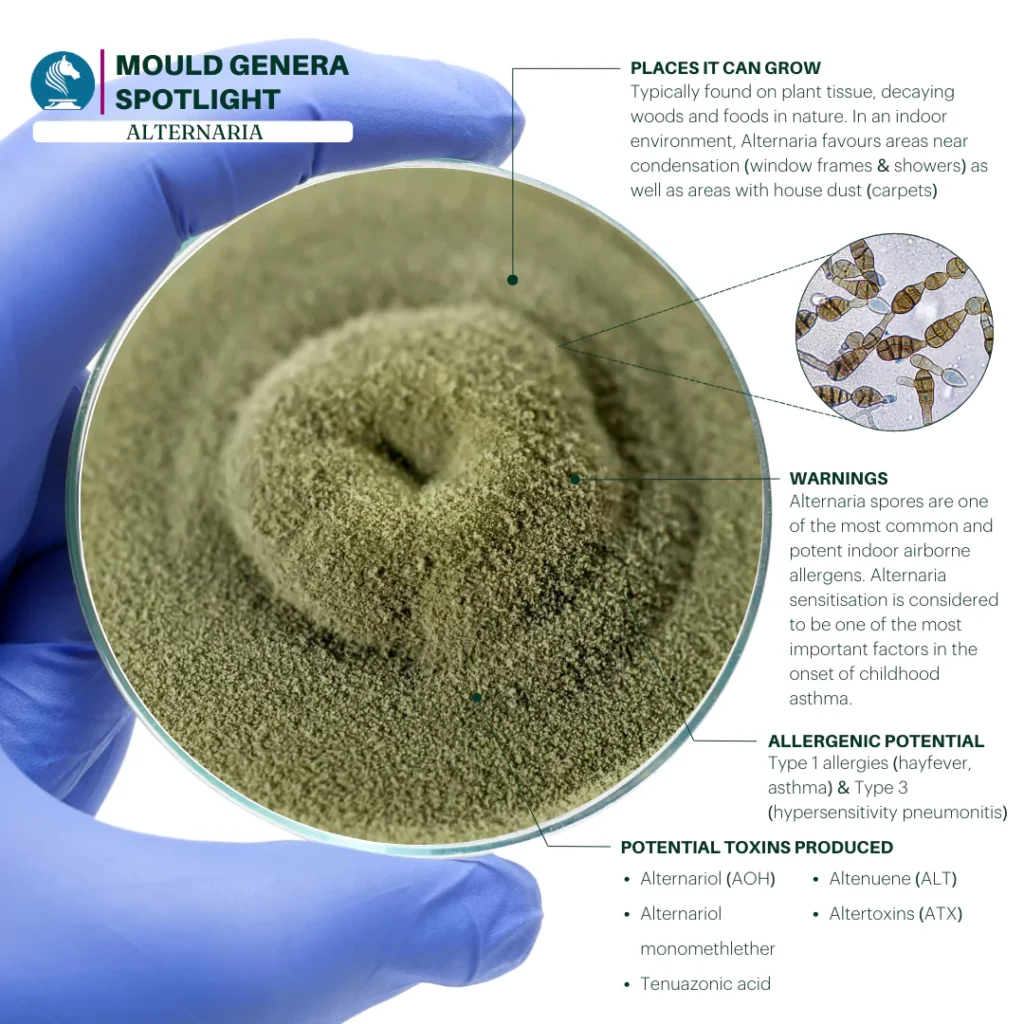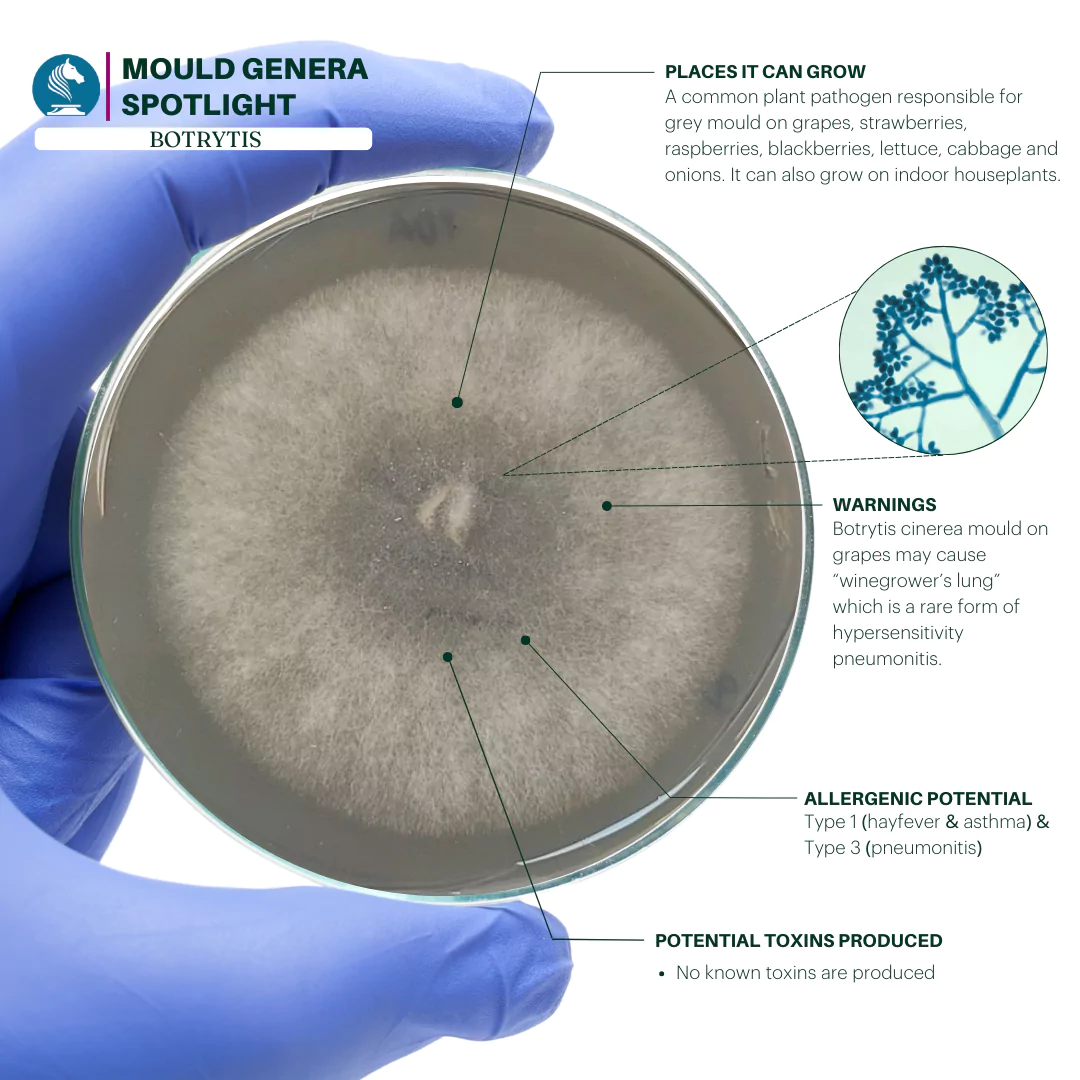
Mould Genera Spotlight - Alternaria
Overview
Alternaria is a genus of mould known for its widespread presence in both indoor and outdoor environments. It is particularly notorious for causing allergies and being a common contaminant of buildings and agricultural products. Alternaria alternata is one of the most studied species in this genus, recognised by its dark green to black appearance.

Habitat and Growth Locations
Alternaria can be found in a wide range of environments, often favouring:
- Damp indoor areas: It frequently colonises basements, bathrooms, windowsills, and showers, particularly in conditions of high humidity.
- Outdoor environments: It thrives on decaying vegetation, soil, and plant surfaces, especially during the growing season, contributing to plant diseases.
- Water-damaged buildings: After flooding or leaks, Alternaria can grow on walls, ceilings, carpets, and wood.
- Foods: It often contaminates grains, fruits, and vegetables, making it a concern for food spoilage.
Health Risks and Allergenic Potential
Alternaria is one of the most significant mould allergens and can pose various health risks:
- Allergic reactions: Exposure to Alternaria spores can trigger symptoms like sneezing, coughing, itchy eyes, and nasal congestion. It is a common cause of hay fever and is strongly linked to allergic rhinitis and asthma.
- Asthma triggers: It is a well-known asthma exacerbator, particularly in children. Long-term exposure to Alternaria spores has been linked to chronic respiratory problems and increased severity of asthma attacks.
- Infections: In rare cases, immunocompromised individuals can develop cutaneous (skin) infections, and even invasive infections, though these are uncommon.
Toxins Produced
Alternaria is known to produce several mycotoxins, which can have harmful effects on both humans and animals. These include:
- Alternariol and alternariol monomethyl ether, which have been shown to have cytotoxic and mutagenicproperties.
- Tenuazonic acid, a toxin associated with food contamination that can affect the immune system and gastrointestinal health.
- Other secondary metabolites that may act as irritants or cause allergic reactions in sensitive individuals.
Due to these toxins, exposure to Alternaria on contaminated food or prolonged exposure in mouldy environments may pose health risks.
Industrial Uses
While Alternaria is primarily associated with spoilage and health risks, certain species have been studied for industrial applications, such as:
- Biocontrol agents: Alternaria has been explored for use in agriculture as a natural competitor to suppress certain harmful plant pathogens.
- Enzyme production: Certain Alternaria species produce enzymes that may be useful in the biodegradation of organic materials or in industrial processes for breaking down complex compounds.




